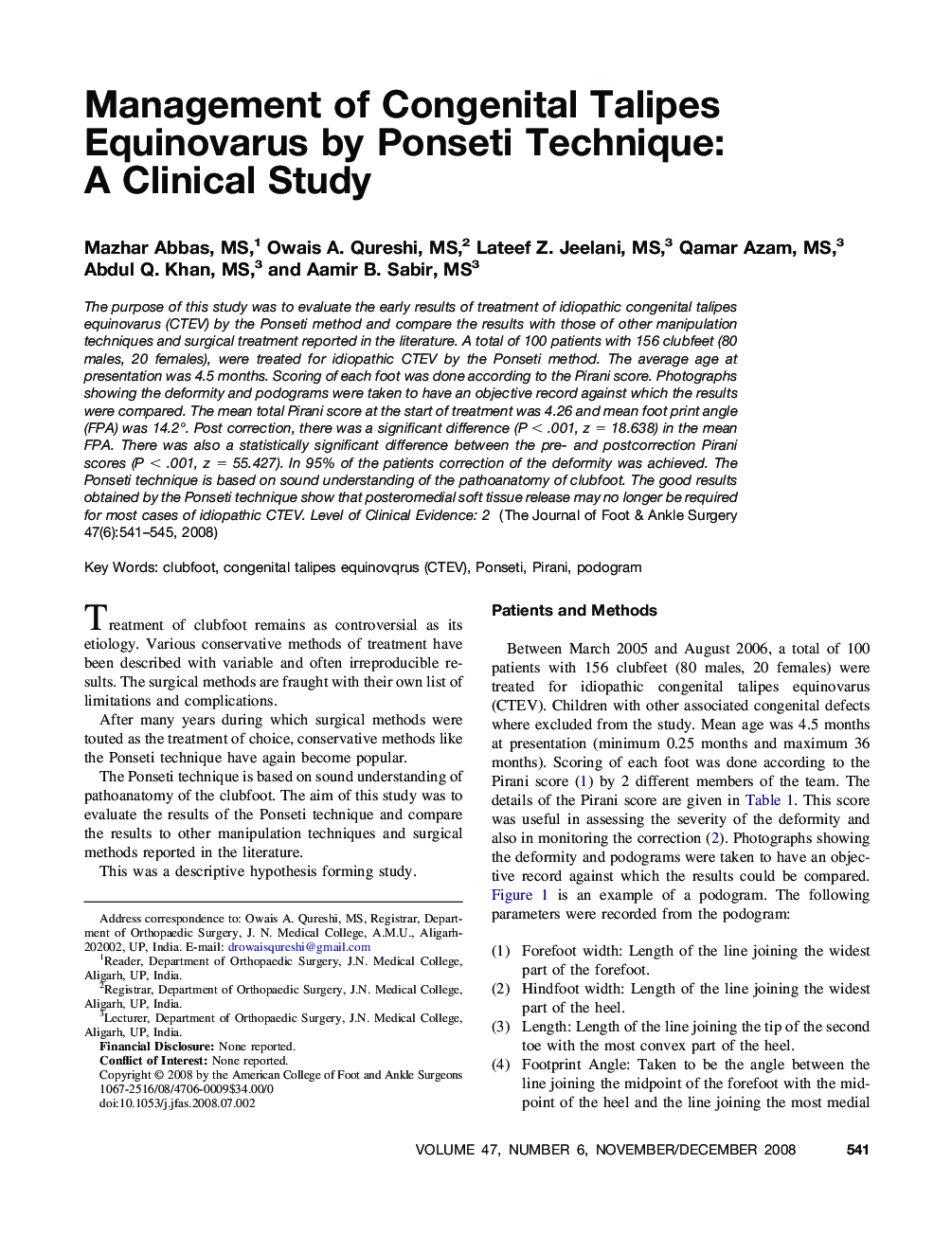| Article ID | Journal | Published Year | Pages | File Type |
|---|---|---|---|---|
| 2713608 | The Journal of Foot and Ankle Surgery | 2008 | 5 Pages |
The purpose of this study was to evaluate the early results of treatment of idiopathic congenital talipes equinovarus (CTEV) by the Ponseti method and compare the results with those of other manipulation techniques and surgical treatment reported in the literature. A total of 100 patients with 156 clubfeet (80 males, 20 females), were treated for idiopathic CTEV by the Ponseti method. The average age at presentation was 4.5 months. Scoring of each foot was done according to the Pirani score. Photographs showing the deformity and podograms were taken to have an objective record against which the results were compared. The mean total Pirani score at the start of treatment was 4.26 and mean foot print angle (FPA) was 14.2°. Post correction, there was a significant difference (P < .001, z = 18.638) in the mean FPA. There was also a statistically significant difference between the pre- and postcorrection Pirani scores (P < .001, z = 55.427). In 95% of the patients correction of the deformity was achieved. The Ponseti technique is based on sound understanding of the pathoanatomy of clubfoot. The good results obtained by the Ponseti technique show that posteromedial soft tissue release may no longer be required for most cases of idiopathic CTEV. Level of Clinical Evidence: 2
